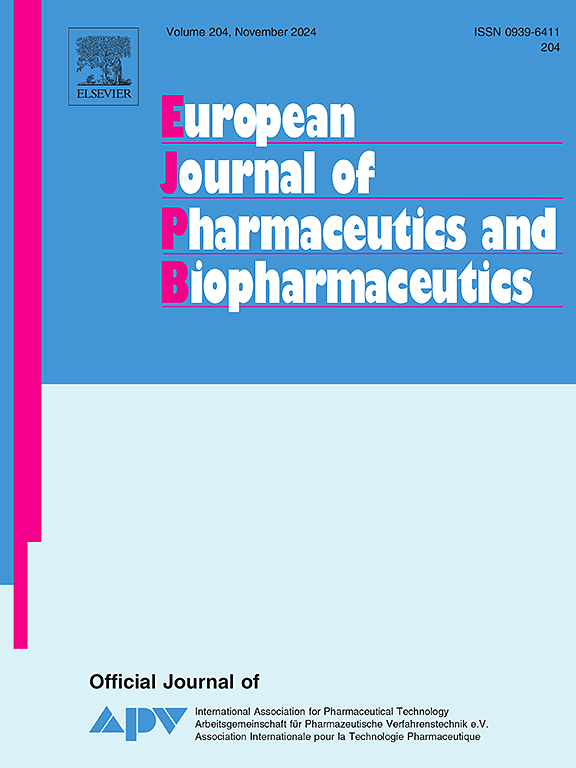Applications and prospects of synthetic receptors for therapeutic protein delivery
IF 4.3
2区 医学
Q1 PHARMACOLOGY & PHARMACY
European Journal of Pharmaceutics and Biopharmaceutics
Pub Date : 2025-06-17
DOI:10.1016/j.ejpb.2025.114789
引用次数: 0
Abstract
Synthetic receptors have gained prominence in synthetic biology due to their tunability, simplicity, versatility, and capacity for precise gene editing, which collectively enhance the temporal and spatial control of therapeutic protein delivery. Several types of synthetic receptors have been engineered to deliver specific therapeutic proteins, including G protein-coupled receptor (GPCR)-based receptor systems, modular extracellular sensor architecture (MESA), synthetic Notch (synNotch) receptor, and synthetic intramembrane proteolysis receptors (SNIPRs). These receptors have demonstrated therapeutic potential in targeting tumors, inflammatory immune diseases, central nervous system disorders, arthropathies, and viral infections by delivering specific proteins to diseased tissues. However, several challenges persist, including safety concerns, suboptimal delivery efficiency, and receptor design and optimization complexity. This review summarizes the current types, characteristics, and biomedical applications of synthetic receptors for therapeutic protein delivery, while also addressing their limitations and potential future directions.

合成受体在治疗性蛋白质传递中的应用与展望
合成受体因其可调性、简单性、多功能性和精确基因编辑能力而在合成生物学中获得突出地位,这些特性共同增强了治疗性蛋白质递送的时间和空间控制。几种类型的合成受体已经被设计用于传递特定的治疗蛋白,包括基于G蛋白偶联受体(GPCR)的受体系统、模块化细胞外传感器结构(MESA)、合成Notch (synNotch)受体和合成膜内蛋白水解受体(snipr)。这些受体通过向病变组织传递特定蛋白质,在靶向肿瘤、炎症性免疫疾病、中枢神经系统疾病、关节病和病毒感染方面显示出治疗潜力。然而,仍然存在一些挑战,包括安全问题、次优输送效率、受体设计和优化复杂性。本文综述了目前用于治疗性蛋白质传递的合成受体的类型、特点和生物医学应用,同时也指出了它们的局限性和潜在的未来发展方向。
本文章由计算机程序翻译,如有差异,请以英文原文为准。
求助全文
约1分钟内获得全文
求助全文
来源期刊
CiteScore
8.80
自引率
4.10%
发文量
211
审稿时长
36 days
期刊介绍:
The European Journal of Pharmaceutics and Biopharmaceutics provides a medium for the publication of novel, innovative and hypothesis-driven research from the areas of Pharmaceutics and Biopharmaceutics.
Topics covered include for example:
Design and development of drug delivery systems for pharmaceuticals and biopharmaceuticals (small molecules, proteins, nucleic acids)
Aspects of manufacturing process design
Biomedical aspects of drug product design
Strategies and formulations for controlled drug transport across biological barriers
Physicochemical aspects of drug product development
Novel excipients for drug product design
Drug delivery and controlled release systems for systemic and local applications
Nanomaterials for therapeutic and diagnostic purposes
Advanced therapy medicinal products
Medical devices supporting a distinct pharmacological effect.

 求助内容:
求助内容: 应助结果提醒方式:
应助结果提醒方式:


